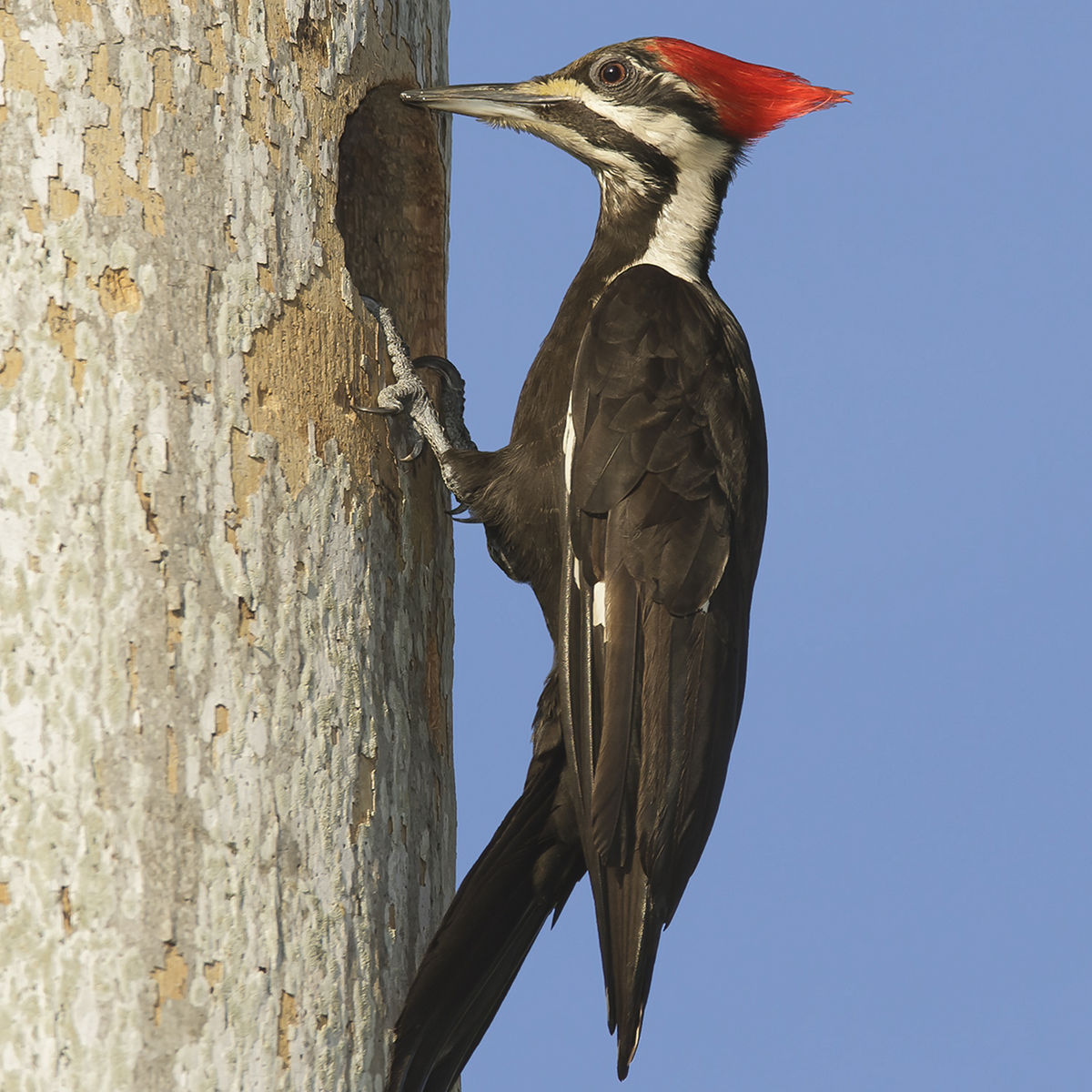Woodpeckers Unleashed: Checking Out the Marvels of These Knowledgeable Tree Climbers
Woodpeckers, with their unique markings and rhythmic drumming resembling through wooded locations, hold a distinct area in the bird world. Their specialized composition and adaptations enable them to browse vertical surfaces with unrivaled ability. Nonetheless, their proficiency of tree climbing is just one aspect of their fascinating actions. As we explore the detailed details of woodpeckers' nesting behaviors, feeding methods, and the recurring conservation initiatives to safeguard these remarkable birds, a deeper admiration for their place in nature unravels.
Makeup and Adaptations
When taking a look at the composition and adaptations of woodpeckers, one can observe amazing features that allow these birds to grow in their specialized eco-friendly particular niche. In addition, woodpeckers have zygodactyl feet, with two toes facing forward and two facing backward, providing a company hold on tree trunks while they search for food or drum for interaction.
Furthermore, woodpeckers have a distinct tongue structure that is long, barbed, and sticky, allowing them to draw out pests from holes in timber. This specialized adjustment enables woodpeckers to exploit a food source that is hard to reach to lots of other bird varieties. Generally, the makeup and adjustments of woodpeckers showcase the remarkable transformative services that have actually enabled these birds to prosper in their arboreal habitat.
Drumming Habits
Having discovered the anatomy and adjustments of woodpeckers, the focus now shifts to recognizing their drumming habits, a distinct element of their interaction and territorial screens. Drumming is a crucial form of interaction amongst woodpeckers, serving numerous purposes such as establishing areas, bring in companions, and signaling alarm system. Each woodpecker species has a special drumming pattern that assists people recognize participants of their very own species and identify them from rivals or killers.
Woodpeckers produce drumming noises by swiftly pecking on resonant surface areas such as dead trees, utility posts, or perhaps steel things, producing a series of rhythmic beats. The intensity and rate of drumming can differ based on the objective; as an example, a rapid drumming series may symbolize aggression in the direction of burglars, while a slower and softer drumming pattern could suggest courtship (Woodpeckers in Florida). In addition, woodpeckers might adjust the regularity and period of their drumming to share specific messages efficiently
Nesting Routines
Discovering the nesting practices of woodpeckers exposes interesting understandings right into their reproductive actions and habitat options. Woodpeckers are recognized for their one-of-a-kind nesting preferences, typically digging deep into tooth cavities in trees to create sheltered areas for increasing their young. These tooth cavities serve not only as a nesting website however additionally as a safe and secure haven from killers and severe climate.
Woodpeckers show a high degree of integrity to their nesting websites, usually returning to the exact same place time after time. This actions highlights the importance of suitable habitat availability for their reproductive success. The selection of a nesting website is crucial for woodpeckers, with aspects such as tree types, height, and decay stage playing substantial duties in their decision-making procedure.
Surprisingly, some woodpecker types are understood to excavate numerous dental caries within their region, providing themselves with different nesting alternatives. This method may act as a form of insurance versus prospective risks or disturbances to their key nesting website.

Feeding Techniques
Woodpeckers utilize a check this site out selection of specialized feeding strategies to procure their key food sources. One of the most unique feeding behaviors of woodpeckers is drumming, which involves rapid pecking on trees to discover pests under the bark. This drumming not only helps them find victim yet additionally functions as a means of communication with various other woodpeckers. Woodpeckers have solid, chisel-like beaks that permit them to drill into wood easily. As soon as an opening is created, they use their long, barbed tongues to extract bugs such as ants, beetles, larvae, and crawlers. These tongues are covered with sticky saliva that aids catch the target. Woodpeckers investigate this site are additionally known to dig deep into dental caries in trees to accessibility surprise insect larvae or sap. Some varieties, like the acorn woodpecker, shop nuts in specially produced holes called granaries. This calculated keeping of food assists them make it through during food deficiency durations. Woodpeckers are absolutely impressive in their feeding strategies, showcasing flexibility and knowledge in acquiring their nourishment.
Conservation Efforts
Amidst the intricate feeding strategies displayed by woodpeckers, the conservation initiatives intended at guarding these interesting birds play a vital function in preserving More Help their environments and populations. Woodpeckers deal with various hazards to their survival, including habitat loss as a result of deforestation, environment modification altering their communities, and crashes with manufactured structures such as structures and automobiles - Woodpeckers in Florida. Conservationists are proactively working to address these challenges and make certain the long-lasting well-being of woodpecker varieties

Education and public awareness projects are additionally vital parts of woodpecker conservation initiatives. By increasing awareness regarding the significance of these birds in maintaining healthy woodland communities, conservationists can amass assistance for environment conservation campaigns and promote liable land administration practices. Via collective initiatives between scientists, policymakers, and local areas, we can function together to safeguard a future where woodpeckers flourish in their all-natural habitats.
Final Thought
